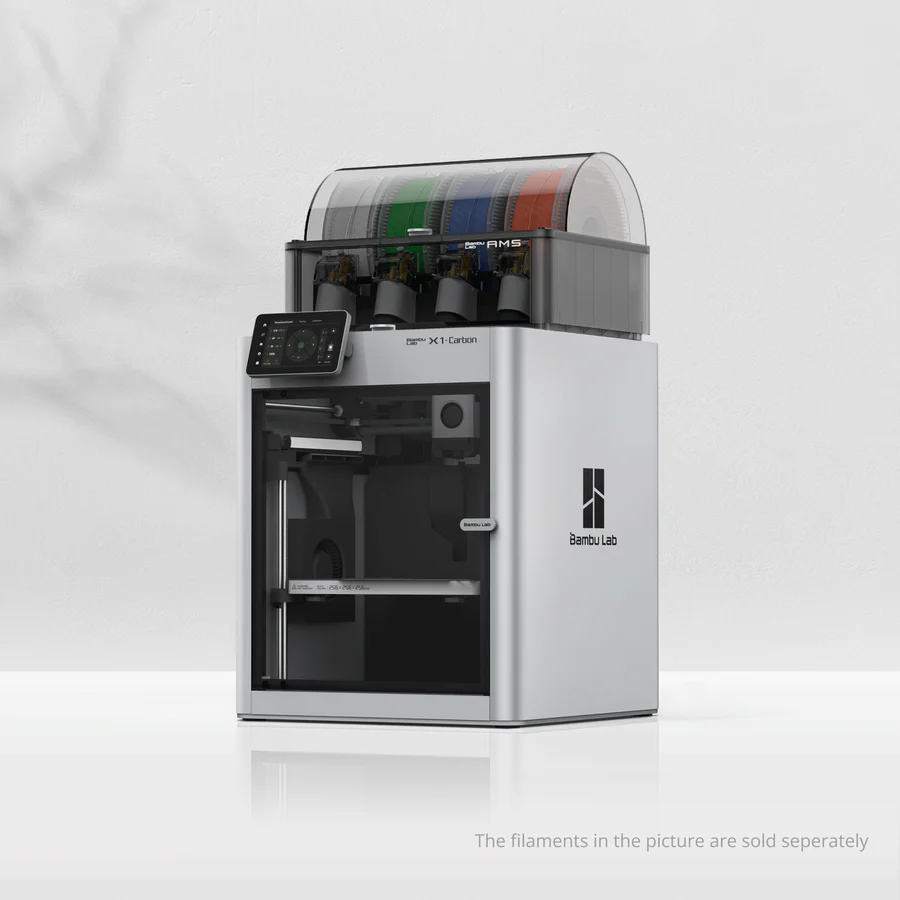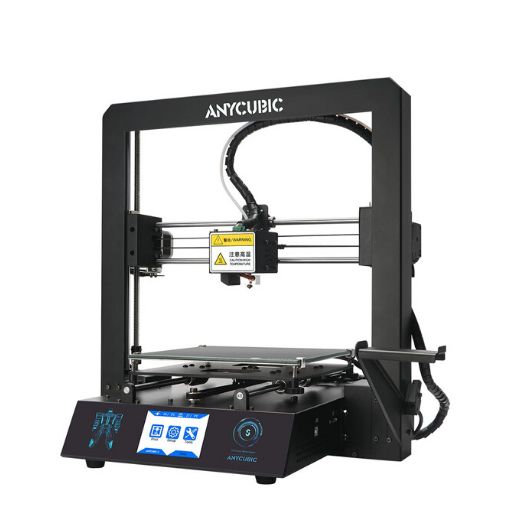Compare X1 carbon vs Mega S
Comparison between the best 3D printers
Choose the best 3D printer at the best price. The cheapest 3D printers are here.
Buy a 3D printer here with 3D Fila.
 |
 |
|
| Model | X1 carbon |
Mega S |
| Printing Material | Filament | Filament |
| Buy Filament for Bambu Lab X1 carbon | Buy Filament forAnycubic Mega S | |
| Estimated price | $1449,00 | $149,00 |
| Manufacturer | Bambu Lab | Anycubic |
| Release Year | 2023 | 2019 |
| Print Volume [mm] | 256x256x256 | 210x210x205 |
| Printer Size [mm] | 389x389x457 | 405x410x452 |
| Weight [kg] | 14,13 | 14,5 |
| Power Loss Recovery | YES | YES |
| Enclosed printer | YES | NO |
| Bed Leveling | Automatic | Manual |
| Filament End Sensor | YES | YES |
| Bed type | Heated | Heated |
| Power supply system | Direct Drive | Bowden |
| Standard nozzle | 0,4 | 0,4 |
| Maximum Nozzle Temperature [°C] | 300 | 260 |
| Maximum Bed Temperature [°C] | 120 | 110 |
| Maximum printing speed [mm/s] | 500 | 100 |
| Filament holder | YES | YES |
| Camera for supervision | YES | YES |
| Recommended filaments | PLA, PETG, TPU, PVA, PA, PA-CF, Nylon, PC | PLA, TPU, ABS, PETG |
| Recommended slicers | Bambu Studio, Super Slicer, Cura, Prusa Slicer, Orca | Cura, Simplify, Slic3r |
| Maximum Resolution [mm] | 0,1 | 0,1 |
| Processor | Quad ARM A7 1.2 GHz | 8 bits |
| Display | Touchscreen 5'' | Touchscreen TFT 2,8'' |
| Power Supply | 350 W | 12V / 300W |
| Connectivity | Wifi, Bambu bus, Cartão SD | SD / USB |
| Operating systems | Windows, Linux, Macbook | Windows, Mac, Linux |
| Date of registration in the system | 2024-04-10 | 2021-04-15 |
| Release date | 2023 | 2019 |
| Extra features | The Bambu Lab X1 Carbon revolutionizes 3D printing with stunning design, high print speeds, and a streamlined user experience. It stands out with its CoreXY system, a hotend capable of reaching 300°C, allowing for a wide range of filaments. Its LiDAR-assisted bed leveling system, vibration compensation, and AMS multicolor printing capability raise the industry standard. Print quality is impressive, with the ability to fine-tune for perfection. The X1 Carbon, with its closed build volume, not only promises but also delivers one of the most advanced 3D printing experiences available to consumers. | The Anycubic Mega S offers a printing platform with excellent adhesion, easy removal after cooling. It has a filament sensor for a better experience with flexible materials and a multilingual and intuitive color touchscreen. Assembly is quick, requiring only 8 screws and 3 connections. It has a large build volume (210 x 210 x 205 mm), high positioning accuracy and supports a variety of materials, including TPU, PLA, ABS and wood. It stands out for its solid metal structure, superior stability, high-quality printing with layer resolution of up to 50 microns, Ultrabase for easy adhesion and removal of parts, resumption of printing after power outage, high-quality extruder for flexible filaments, suspended filament support and stable structure that reduces shaking, improving printing quality. |
| Support for multiple colors and materials (AMS and CFS) | YES | NO |
Notes * |
||
| Cost-benefit | 7 / 10 | 7 / 10 |
| Hardware | 6.4 / 10 | 2 / 10 |
| Tela | . | . |
| Print volume | 4 / 10 | 3 / 10 |
| Performance | 4 / 10 | 1 / 10 |
Conclusion |
| In conclusion, the Bambu Lab X1 Carbon and the Anycubic Mega S exemplify two distinctly different approaches to 3D printing, catering to different user needs and budgets. The X1 Carbon, with its advanced features like automatic bed leveling, a high maximum printing speed, and a closed build volume, is designed for users seeking a high-performance machine capable of handling a wide range of materials and intricate designs. Its innovative technology and high print quality justify its higher price point, making it an ideal choice for professional and serious hobbyist users. On the other hand, the Anycubic Mega S offers a more budget-friendly option, ideal for beginners and those wanting a reliable 3D printer without significant investment. Its straightforward setup, decent build volume, and compatibility with a variety of materials make it a solid choice for novice users looking to explore the world of 3D printing. However, its manual bed leveling and lower performance specifications may limit its appeal to experienced users. Ultimately, the choice between the two models depends on the user's specific needs, budget considerations, and the complexity of the projects they intend to undertake. For those prioritizing advanced features and higher performance, the X1 Carbon stands out as the clear winner, while the Mega S remains a commendable option for more casual or entry-level users. |

